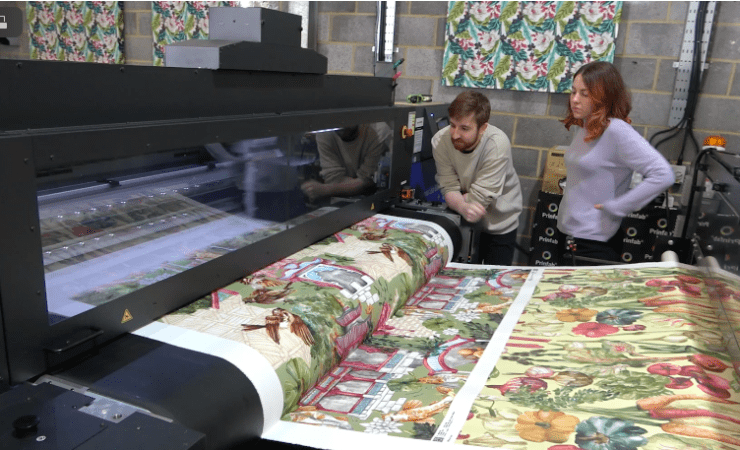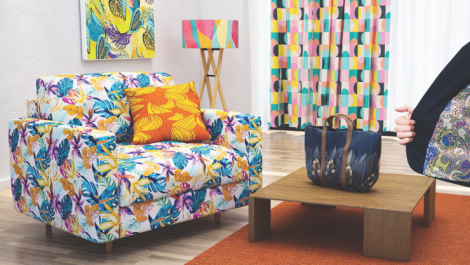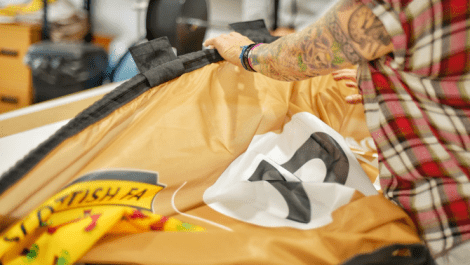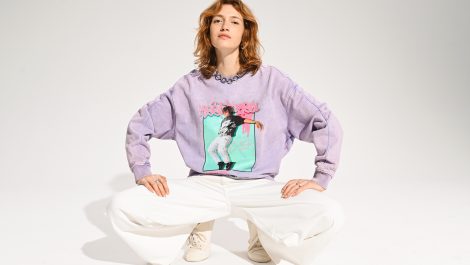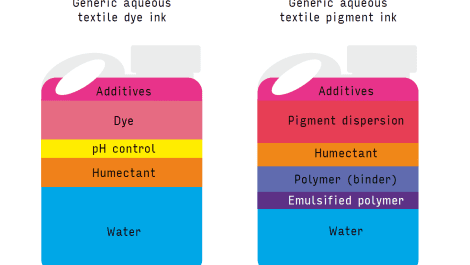Kent, UK-based Prinfab has found ‘a whole new world of commercial opportunity’ by offering an on-demand textile printing service. We look at how that came about.
Prinfab was founded in 2016 specifically as an on-demand textile printing business. Co-founder Oliver Mustoe-Playfair had previously spent 15 years in stock-based retail business in the craft sector but felt that stock and handling issues would make this model inefficient for textiles.
He clearly got the on-demand model right, as the business grew ‘exponentially’ and by the end of 2020 had moved premises three times and was running a fleet of about 10 direct-to-textile pigment and dye-sublimation printers.
Prinfab prints on a wide range of natural fibre and synthetic fabrics that are used for purposes including homeware, fashion, and clothing such as aprons, swimsuits, scarves, and dresses.
‘The quality and consistency of the prints is of paramount importance in our particular business. We only have to get it wrong once and we lose a customer,’ comments Mr Mustoe-Playfair, adding, ‘As we manufacture in the UK, we also have oversight of the whole production process and far greater openness and transparency with the supply chain.
‘We know exactly where our fabrics come from. And we are using state-of-the-art printers to produce this fabric. This is quality we haven’t seen from overseas manufacturers. Our whole business is built on repeat custom so unless the quality is there, we don’t have a business.’
Industrial approach
As the business grew it became apparent that Prinfab would need to move to more industrially-orientated equipment. Research led to Epson’s Monna Lisa, which met the productivity and quality standards that the company needed.
‘The print quality really is next level. The combination of the system itself with the Genesta pigment inks offered a level of print that we didn’t see anywhere else. That, combined with the right workflow, was a perfect fit for our very fast paced print-on-demand business,’ confirms Mr Mustoe-Playfair.
But as well as meeting the production needs for existing business, the Epson machine has opened up new possibilities, as he adds:
‘We are also enjoying a whole new world of commercial opportunity made possible by offering an on-demand textile printing service with no minimum order and commercially viable pricing. For the first time, print technology has enabled that to be a thing.
‘Now anyone can start printing their own fabric. They only have to print one metre, and they can start a business from that. They can design a dress, they can design an apron, and if it sells they can order more. If it doesn’t, they haven’t lost a great deal.’
Green credentials
Another angle that users of this kind of textile printing technology could exploit to reach new customers is sustainability. Phil McMullin, Pro Graphics head of sales at Epson UK, explains, ‘In-market inkjet textile printing can help fashion brands shape and respond to robust environmental policies.
‘Producers keen to ensure environmental impact compliance can harness the benefits of the technology to meet laws, regulations, certifications and more demanding specifications from customers and the fashion industry. These include policies such as the [EU’s] Extended Producer Responsibility, which is effectively an environmental taxation on a product’s carbon footprint.
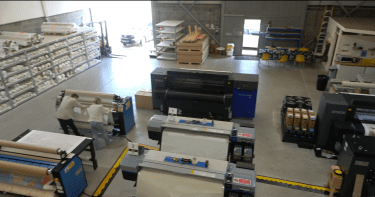
The Epson Monna Lisa and various dye-sub printers are in regular use at Prinfab
Mr McMullin also references the United Nations Sustainable Development Goals (SDGs), many of which are highly relevant for the fashion industry, including clean water, clean energy, responsible consumption and production, and protection of life on land.
‘This is an increasingly important consideration when the fashion industry is trying to reduce the environmental impact its production has. An impact that produces 10% of all humanity’s carbon emissions and is the second-largest consumer of the world’s water supply,’ he notes.
He claims that the Monna Lisa textile printer delivers ‘environmentally considerate’ production in terms of carbon footprint and water consumption, and cites a study comparing the Monna Lisa with a rotary screen press showed a 27% reduction in water consumption for the digital process, thus reducing the volume of wastewater sent to treatment plants and the amount of energy needed to heat process water. In terms of carbon footprint, the Monna Lisa was estimated to generate 40% less CO2-equivalent than the screen printer. The Genesta inks used also carry various certifications including the Oeko-Tex Eco Passport, Global Organic Textile Standard and Bluesign approval.
Mr McMullin also notes that exploring the development of more effective environmental processes and technologies is something Epson’s Total Textile Solution Centre is focused on. This facility, located near Lake Como, Italy, develops, tests and researches textile solutions to help advance the digital textile printing process, he says.

